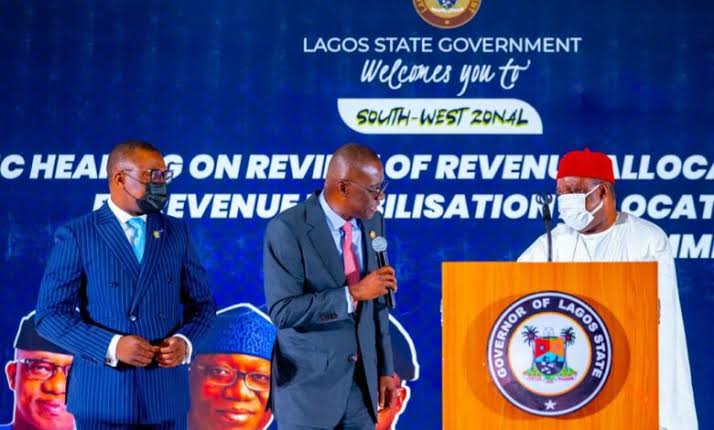Chairman of the Revenue Mobilisation Allocation And Fiscal Commission (RMAFC) Mr Elias Mbam, on Monday said that the review of revenue allocation formula had become necessary for fairness, justice and equity.
Mbam made the declaration at the opening of a two-day South-west Zonal Public Hearing On The Review Of The Vertical Revenue Allocation Formula on Monday, in Lagos.
He said that the commision had started the process of reviewing the subsisting Vertical Revenue Allocation Formula in line with changing realities.
“The last review of the revenue allocation formula was in 1992. Since then, a lot of socio-economic changes have occured, hence, necessitated the need for a review to reflect changing realities.
“RMAFC by virtue of paragraph 32(b) ,part 1 of the third schedule to the 1999 constitution of the Federal Republic of Nigeria (as amended) is empowered ‘ to review from time to time the revenue allocation formula and principles in operation.
“This is to ensure conformity with changing realities, provided that any revenue formula which had been accepted by an Act of the National Assembly shall remain in force for a period of not less than five years from the date of commencement of the Act,” ” he said.
According to him, the commision had called for memoranda on the review of the formula from stakeholders including Civil Society Organisations (CSO’s ), academia and the general public to achieve this.
The chairman stated that the commision had undertaken sensitisation visits to all the States and Local Governments as part of the process to ensure that the generality of Nigerians were carried along.
“In addition, relevant data has been collected from relevant government agencies, ” he said.
Mbam promised that the commision would take all the views and recommendations of stakeholders at the public hearing into consideration , while enjoining them to participate actively and effectively in the process .
He lauded Gov. Babajide Sanwo-Olu for accepting to host the hearing and commended the Governors of Ogun , Osun , Oyo, Ondo and Ekiti for their active participation.
The commision’s boss noted that the zonal public hearing would be replicated in the other five geo-political zones.
The News Agency of Nigeria (NAN) reports that the Lagos State Government through its Commissioner For Finance , Dr Rabiu Olowo, recommended that the allocation formula should be reviewed.
Olowo said that the Federal Government, including the Federal Capital Territory, should be given 34 per cent , State Government – 42 per cent, Local Government Councils – 23 per cent and Lagos State (special status) – 1 per cent.
Representing Gov. Dapo Abiodun of Ogun State, the Commissioner For Finance, Mr Dapo Ogunbamij, recommended 30 per cent of the allocation for the Federal Government, 45 per cent for states and 25 per cent for the local Governments.
Meanwhile, various civil society groups, amongst other stakeholders at the public hearing, suggested that the largest chunk of the revenue formula be allocated to the local government to propel infrastructure and human development to emanate from the grassroot.





